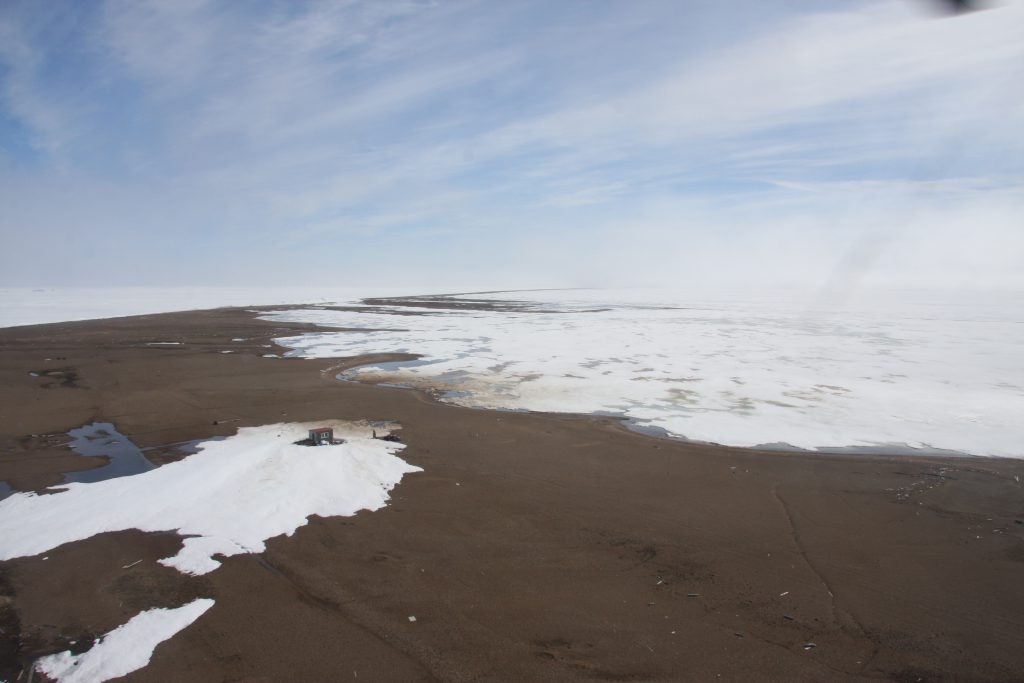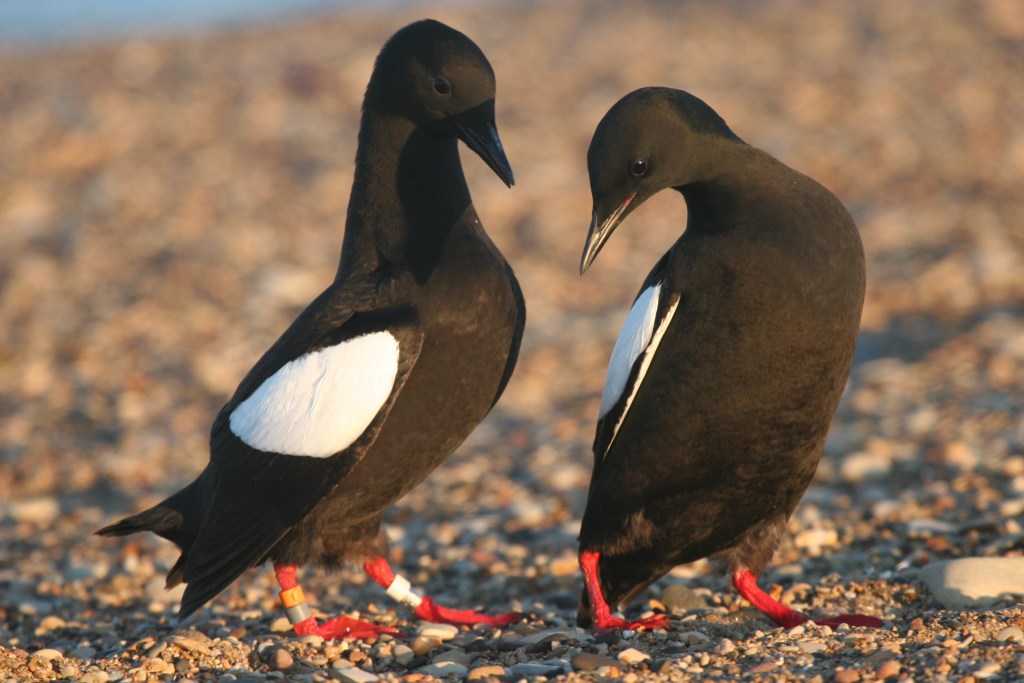Great to be back on Cooper island after two intense weeks of preparation in Seattle and Utqiaġvik. Arriving on the island begins an even more intense period as I need to turn the 8-by-12 foot cabin from the overwinter storage shed it has been for the past nine months into a place where I can sleep, cook, process data–and eventually even relax.
Concurrently, I have been setting up my power sources (solar and wind generators powering a battery bank) and communications (satellite phone, inReach and VHF radio) that keep the camp running and connected to the outside world. While the large snowdrift that currently surrounds my cabin impedes my accomplishing these tasks, it does provide my drinking water for the first half of the summer. Throughout the day I have been shoveling snow into any available container as the island has no fresh water and I need to melt as much snow as possible before it disappears.
All of the required logistics chores need to be balanced with the daily fieldwork. Since my arrival three days ago, conditions for censusing the colony and retrieving geolocators have been excellent with clear skies and little wind. While visiting all nest sites to determine who survived the winter and who is breeding with whom is the highest priority, I also need to retrieve the geolocators that I put on 25 birds at the end of the 2017 breeding season. Catching the birds in their nest cases has gone well this year with nine of the units retrieved in the past two days.
These light-sensitive data loggers record the time of sunrise and sunset each day allows me to determine their location for the nine months they have been away from the colony. We have deployed geolocators since 2011 and this year’s data is extremely important since the Bering Sea ice, where guillemots typically winter, did not form this past year. The effect of this unprecedented event on guillemot movements and distribution will be one of this summer’s most important findings.

I will know the size of this year’s breeding population in about a week and, since many of the females have had low colony attendance in the last few days and are likely offshore building up reserves for egg laying, the first clutches should be appearing within the next 4-5 days.
Looking forward to sharing what is promising to be a most interesting and important field season.